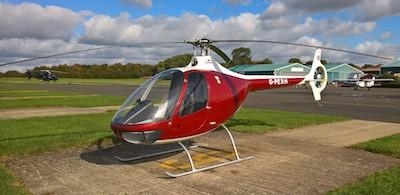'Most Part 27 Aircraft Are Not Equipped With Even The Most Basic Stabilization Systems'
As a result of its comprehensive analysis of fatal helicopter accidents, the U.S. Helicopter Safety Team determined that loss of control while inflight has been a leading factor in accident causes, especially involving light helicopters.

Current light helicopters have flight characteristics that are challenging and demanding of pilot workload. In response, the USHST is moving forward with some first steps to increase safety by encouraging the development and installation of stability augmentation systems and autopilot devices that increase the flight stability of light helicopters.
"If light helicopters operating under visual flight rules could be enhanced to meet some of the instrument flight rule stability requirements, many loss-of-control accidents could be avoided," explains Nick Mayhew, industry co-chair of the U.S. Helicopter Safety Team. "Aircraft stability would help a pilot maintain positive aircraft control during temporary losses of visual cueing or disorientation."

Transport vs. Light Rotorcraft: Automatic flight control systems have been successfully integrated into transport category (Part 29) helicopters for more than 30 years and have proven their effectiveness and safety for flight in low visibility and instrument meteorological conditions. However, most of these systems are too complex or heavy to integrate into Part 27 helicopters, particularly single-engine models. Consequently, these smaller rotorcraft lack the operational capability and inherent safety that autopilot systems provide. This restricts such aircraft from operating under instrument flight rules and results in more frequent flights under VFR conditions in the midst of poor visibility and low ceilings.
Since most Part 27 aircraft are not equipped with even the most basic stabilization systems, they remain more susceptible to loss of control. This could occur when operations are conducted under marginal visual flight rules, when a pilot encounters unintended flight into instrument meteorological conditions or when a pilot becomes spatially disoriented.
New Pathway: In response to this situation, the USHST is presenting a new Recommended Practices document, "Automatic Flight Control Systems in Light Helicopters," (https://ushst.org/loss-of-control/). It provides wide-ranging information about automatic flight control functionality and performance, including:
- Stability Augmentation
- Auto-Land
- Basic Coupled Modes and IFR Coupled Modes
- Hover-Assist
- Envelope Protection
- Automatic Hover Departure
- Level or Save Me Mode
- Autorotation Assistance
New Tech: In addition, the paper offers an extensive look at the current and new stability augmentation and autopilot technology, including:
- Systems currently offered by rotorcraft manufacturers
- Systems offered by outside 3rd party vendors
Integration of UAS and eVTOL stabilization technology and their safety enhancing features such as:
- Self-Leveling in Flight or at Hover,
- Altitude Hold,
- Automatic Roll and Yaw Control,
- Omnidirectional Collision Avoidance, etc.
"With the increasing maturity of existing technology and the emergence of new technologies commonly used beyond the aerospace industry," adds Mayhew, "it may be possible to find automatic flight control system solutions that achieve sufficient stability and reliability through low-cost/low-weight systems. Working together, we can find these solutions and enhance safety."
 NTSB Final Report: Rutan Long-EZ
NTSB Final Report: Rutan Long-EZ ANN FAQ: Turn On Post Notifications
ANN FAQ: Turn On Post Notifications Classic Aero-TV: ICAS Perspectives - Advice for New Air Show Performers
Classic Aero-TV: ICAS Perspectives - Advice for New Air Show Performers ANN's Daily Aero-Linx (06.28.25)
ANN's Daily Aero-Linx (06.28.25) Aero-News: Quote of the Day (06.28.25)
Aero-News: Quote of the Day (06.28.25)



